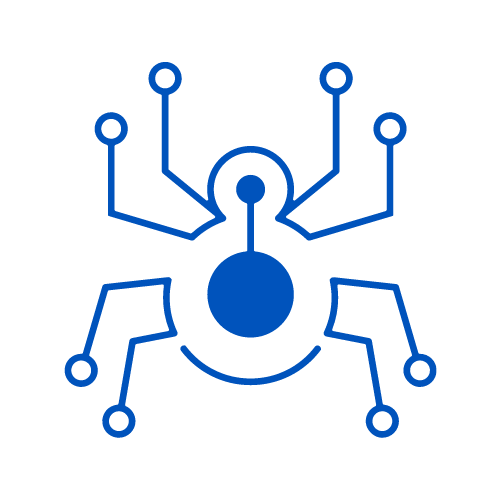Exploring the Attack Surface: Our Guide to AI Agent Exploitation

Alright, fellow explorers of the digital frontier, let's talk about AI agents. Forget your basic chatbots; these things are programs designed to act on their own, collecting data and achieving goals without constant human hand-holding. How? By using powerful AI models, primarily Large Language Models (LLMs), as their brain, and connecting to external tools – like APIs, databases, and services – to do things in the real or digital world. This ability to connect and act is what makes them powerful for their owners, but also incredibly interesting targets for us.
You see, while they inherit the known weaknesses of LLMs, like prompt injection, their connection to external tools throws open a whole new world of vulnerabilities. Think of it: they're not just processing text; they're executing code, querying databases, and calling APIs. This means they're now exposed to classic software vulnerabilities like SQL injection, remote code execution (RCE), and broken access control. And because they can act autonomously and interact with external systems, a successful attack can escalate quickly, moving from data leakage to credential theft, tool exploitation, and even taking over infrastructure.

The good news for us is that these risks aren't tied to specific frameworks like CrewAI or AutoGen. The vulnerabilities usually come from insecure design, misconfigurations, and unsafe ways tools are integrated, not flaws in the frameworks themselves. This means our techniques are broadly applicable.
So, how do we approach these targets? The source outlines several promising avenues. Let's break down a few key attack scenarios and how they work:
Mapping the Target: Identifying Agents and Their Capabilities
Before launching a major assault, you need to understand your target. AI agent systems often involve multiple collaborating agents. Knowing which agents exist and what their roles are is step one.

- Identifying Participant Agents: The orchestration agent usually knows about all the other agents because it delegates tasks. By crafting a prompt that asks the orchestration agent not to delegate but to list its "coworker agents," we can potentially reveal the team structure. The source provides examples of inputs for both CrewAI and AutoGen that attempt this.
- Relevant Threats: Prompt injection, intent breaking, goal manipulation.
- Extracting Agent Instructions: Each agent has system instructions defining its role, goals, and rules. Getting these is like getting the blueprints – you learn what the agent should do and, more importantly, what it's not supposed to do, which helps identify ways to make it deviate. You can try to get the orchestrator's instructions directly or leverage the inter-agent communication channels to ask specific agents for their instructions. The source shows prompts designed to make agents reveal their system instructions.
- Relevant Threats: Prompt injection, intent breaking, goal manipulation, agent communication poisoning.
- Extracting Agent Tool Schemas: Agents use tools, and each tool has a schema defining its name, arguments, and description. Knowing the tools available and their expected inputs/outputs is crucial for crafting payloads to misuse those tools. Similar to instruction extraction, you can ask the orchestrator or specific agents for their tool details.
- Relevant Threats: Prompt injection, intent breaking, goal manipulation, agent communication poisoning.

Exploiting Integrated Tools: The Expanded Attack Surface
This is where the real fun begins. Because agents connect to external tools, vulnerabilities in those tools, or the way the agent uses them, become attack vectors.
- Unauthorized Access to Internal Network (via Web Reader): Agents might have tools that can read web content. If this tool has unrestricted network access, you can trick the agent into using it to fetch resources from the internal network, not just external websites. This is a variation of Server-Side Request Forgery (SSRF). The source demonstrates providing an internal IP address as a URL for the web reader tool.
- Relevant Threats: Prompt injection, tool misuse, intent breaking, goal manipulation, agent communication poisoning.
- Sensitive Data Exfiltration via Mounted Volume (via Code Interpreter): If an agent uses a code interpreter (like a Python environment) and a directory from the host system is mistakenly mounted into the container it runs in, we can abuse the interpreter to read files from that mounted volume. This is a configuration issue, but a common mistake. We can craft code (delivered via a prompt) that searches for sensitive files (like credentials) in the mounted path and then exfiltrates them, potentially by encoding them to bypass standard content filters.
- Relevant Threats: Prompt injection, tool misuse, intent breaking, goal manipulation, identity spoofing and impersonation, unexpected RCE and coder attacks, agent communication poisoning.
- Service Account Access Token Exfiltration (via Code Interpreter): Cloud environments often expose metadata services to VMs, which can contain valuable information like service account tokens. If a code interpreter runs in a VM with access to this service (another common misconfiguration), we can use the interpreter to make a request to the metadata endpoint and steal the token. The source shows crafting a prompt that instructs the agent to run Python code to fetch the token using the specific metadata URL and required header.
- Relevant Threats: Prompt injection, tool misuse, intent breaking, goal manipulation, identity spoofing and impersonation, unexpected RCE and coder attacks, agent communication poisoning.
- Exploiting SQL Injection (via Database Tool): If an agent has a tool that interacts with a database, and that tool's input isn't properly sanitized, you can inject malicious SQL queries. This allows you to dump database contents, potentially revealing sensitive user data like transaction histories. The source provides an example where the "days" parameter for a "View Transactions Tool" is injected with a SQL payload to select all rows.
- Relevant Threats: Prompt injection, tool misuse, intent breaking, goal manipulation, agent communication poisoning.
- Exploiting Broken Object-Level Authorization (BOLA): A BOLA vulnerability occurs in a tool when it allows access to objects (like user data or transaction records) just by knowing their ID, without properly checking if the requesting user is authorized to access that specific object. If an agent uses such a tool, you can simply provide the ID of another user's data (e.g., a transaction ID) via the prompt, and the agent will fetch it using the vulnerable tool. This is often straightforward because the input payload doesn't look obviously malicious.
- Relevant Threats: Prompt injection, tool misuse, intent breaking, goal manipulation, agent communication poisoning.
Chaining Attacks: Indirect Prompt Injection
Sometimes, you can't directly talk the agent into doing something malicious. But what if the agent reads content from a source you can influence? This is indirect prompt injection.
- Indirect Prompt Injection for Conversation History Exfiltration (via Web Reader): Imagine an agent uses its web reader tool to summarize news. If you can compromise a website the agent visits, you can embed malicious instructions in the webpage content. When the agent reads the page, it also reads your hidden instructions. These instructions can tell the agent to perform a harmful action, like sending the user's conversation history (which the agent might include in its context or summary) to an attacker-controlled server as part of a URL. The source shows examples of malicious HTML containing instructions that trick the agent into loading another URL and including the conversation summary in the query parameter.
- Relevant Threats: Prompt injection, tool misuse, intent breaking, goal manipulation, agent communication poisoning.

What Makes These Attacks Possible?
Fundamentally, these attacks succeed because of a combination of factors:
- LLM Limitations: LLMs struggle to consistently resist prompt injection, making them susceptible to manipulation.
- Insecure Design/Misconfiguration: Overly permissive prompts, unsafe tool integrations, insufficient access controls, mistakenly mounted volumes, and unrestricted network access for tools create the openings.
- Vulnerable Tools: The tools themselves might have classic software vulnerabilities like SQL injection or BOLA.
- Agent Communication Channels: In multi-agent systems, attackers can sometimes exploit the communication channels between agents to forward payloads to targets they can't directly access.
As you can see, the landscape of AI agents presents a fascinating new area for security exploration. By understanding how agents work, identifying their tools, and recognizing common misconfigurations and vulnerabilities, we can uncover and potentially exploit weaknesses in these autonomous systems. Remember, the goal is to understand the attack surface – because if we don't explore it, someone else might, with less ethical intentions. Happy hunting!









